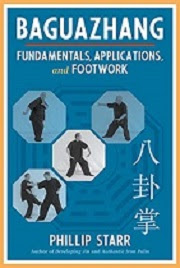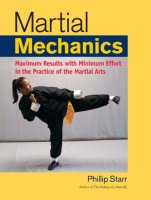By Phillip Starr
You're probably familiar with the hand weapon/technique that's usually referred to as a “knife-hand”, right? Well, there's more to the name than is usually considered. For instance, the written form of “knife-hand” in Japanese and Chinese characters doesn't mean “knife” as we normally think of it. In English, a “knife” is a rather short bladed device that includes everything from kitchen knives to stilettos, Bowie knives, Arkansas toothpicks, and butter knives.
The name of the technique in Japanese is “shuto” and in Chinese it is “shou dao.” This name is comprised of two characters, the first of which is “shu” or “shou”, which means “hand.” But what most people miss is the second character, “do” or “dao”, which is written as 刀. It doesn't necessarily refer to a knife as we normally think of it. Rather, it refers to a single-edged, curved blade. Yes, some knives fall into this category. So do Japanese swords (often referred to as “do”) and Chinese broadswords (“dao”). Straight-bladed, double-edged blades go by another name.
So, a more correct term would be “sword hand” or “broadsword hand.” The character tells us that the cutting edge is curved rather than straight. Curved blades are made for slashing whereas straight blades work best for thrusting techniques. So, what difference does that make?”, you might ask. Well, sit back, relax, and listen up... A curved blade is stronger than a straight blade in so far as slashing/cutting techniques are concerned. The curved edge allows it to strike with greater power.
In my opinion, the correct form of the “sword hand” is as shown in the photo; the wrist is somewhat curved. In fact, the entire arm, from the shoulder to the end of the little finger, is slightly curved to resemble the cutting edge of a Japanese katana or a Chinese broadsword. The wrist and arm should NOT be held straight as shown in the other photo. This is a weak hand/arm form that results in a loss of power and possible injury to the hand, wrist, or elbow. However, if the bodily weapon is formed properly, there is a slight stretching sensation along the outer (little-finger) edge of the hand. This naturally firms up the striking surface without using excessive muscular tension in the hand (or forearm, which will slow down the strike because tensed muscles don't move very quickly...).
It is well to investigate the names of some of your traditional forms, too. Take the Okinawan kata, “Wansu”, for example. The Japanese renamed it “Empi.” “Wansu” is thought to be the name of a Chinese envoy who visited Okinawa and taught his form of kung-fu to the natives. This doesn't give us much of a clue as to the nature of the set and how it is to be performed...but the Japanese name does. “Empi” means roughly, “barn swallow.” It's a type of bird that feeds on insects as it defly swoops down to catch them and then gracefully climbs and/or maneuvers to bring it's next snack into its sights. A swallow is fast – very fast – and highly maneuverable. This would seem to indicate that the footwork and body shifting in the kata should be executed in a similar manner.
Now, I'm not saying that the various and sundry names of ALL forms can provide us with tidbits of valuable information, but some of them do and what you discover is certainly worth putting out a little extra effort and investigation. As the saying goes, “The teacher will show you one or two corners. Finding the others is up to you.”


.jpg)
.jpg)
.jpg)
.jpg)
.jpg)
















No comments:
Post a Comment